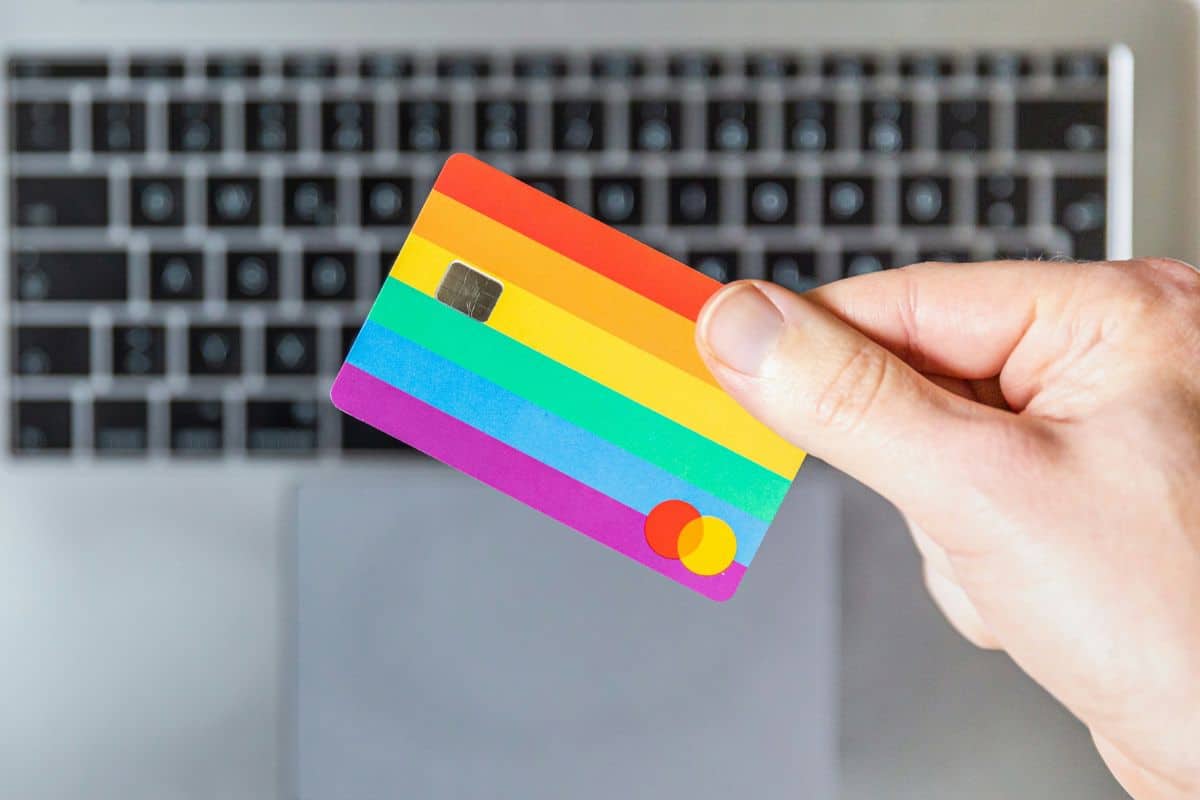
The concept of keeping your current customers satisfied by rewarding their loyalty is certainly nothing new.
Evidence even suggests that loyalty programs could date back as far as the beer sellers of Ancient Egypt. So, is there anything new under the sun for a retention strategy that has more than two millennia of history behind it?
In this article, we look at the evolving landscape of customer reward programs, and recent innovations in how customers both gain and spend their rewards.
The Importance of Loyalty Programs
Why are reward schemes such a valuable and long standing feature of relationship marketing? It comes down to one word: retention.

Traditional Loyalty Schemes
In many ways not much has changed since the Nile’s ancient brewers started rewarding repeat customers through handing out wooden beer tokens, presumably stamped with a foaming jug hieroglyph. Compare this to your modern day barista marking your loyalty card with an image of a coffee cup, and you could be forgiven for struggling to find points of difference.
Even one of the most famous examples of loyalty schemes, Air Miles, first introduced by American Airlines in 1981, was essentially a slight variation on the same transactional form of relationship marketing: “Keep buying from us and we’ll give you a discount on future purchases.”
And that was more or less as sophisticated as it got, until the launch of grocery store loyalty cards in the mid-1990s, when companies started collecting much more detailed information on consumption patterns and buying histories. The comprehensive data they compiled gave companies a much deeper insight into purchasing behaviors and how to influence them.
From then on, if you had a potential overstock you wanted to clear, you knew which customers might be open to help you clear it – with the right offer.
The shifting landscape
Unsurprisingly, the amount of data we can now compile on customer behavior has dramatically changed reward schemes as we know them. Increasing touchpoints and channels have created a wider variety of brand-customer interactions, and more variables for journey mapping and segmentation. All that information has also allowed brands to compile much more detailed buyer personas.
For example, data sets can be used to identify which of a brand’s current customers are following similar behavior paths to their most valued customers. This allows marketers to adjust their tactics, and make better decisions when it comes to allocating spend, time and resources.
Consequently, the focus of recent investment has been largely toward shifting marketing processes from a one-to-many to a one-to-one approach, with much higher levels of personalization and omnichannel communications. The ecosystems (loyalty schemes which involve multiple brands) and back-end processes (reward fulfillment, databases) have necessarily become more complex and agile. This flexibility allows brands to meet their customers where they are, at the right point in their journey, with the right content.
It may be a lot to consider and manage, but by engaging with your customers where they are, both in terms of channel and chronology, this results in far more meaningful and relevant interactions. In fact, in instances where personalization is done well, it can result in a 6.4x lift in customer satisfaction with the loyalty scheme.

Changing Motivations
Customer expectations of brands are evolving. Offerings that were considered nice-to-haves in the past (such as decent information streams, hassle-free returns, or reactive and helpful customer service operations) are now baseline needs. This list of basic requirements increasingly includes a loyalty scheme that makes them feel genuinely rewarded. In fact, according to McKinsey & Company, 83% of customers now expect personalized experiences from their favorite brands.
Company values are also significant drivers of consumer choice and attachment, with modern consumers actively investing in brands that openly share their values and beliefs. 71% of consumers aged 16-24 say they feel strongly about corporate social responsibility. And 89% of shoppers would switch to brands that are associated with good causes (Reward Lion). Brands such as The North Face have become experts at understanding their customers’ values and identities, with alignment central to the fabric of their programs. The company has been making waves with its recent business performance, and adjustments to its sustainability programs, which include circular design, repair services, and trail cleaning.
For reward programs to work they still need to represent profitable investments. What brands are now taking into consideration are the ways in which their customers experience loyalty. While for some people the lure of “free money” will always be enough of an enticement, shifting expectations and values have prompted brands to restructure their tier structures and look at how experiential rewards may act as better motivators.

Increasing customer value, one tier at a time
One feature that is common to most loyalty programs is tiering, typically with entry/mid/higher level structures. While the rewards for entry and mid level memberships are typically discounts, point multiplier events and free gifts, at higher levels the rewards start to become more experiential and exclusive, such as early access to products and VIP treatment at events.
The exclusivity of rewards at higher tiers seems to carry considerable weight for rewards programs. According to research by Loyalty Lion, 79% cited being able to unlock exclusive benefits as a reason for brand loyalty.
Creating a tiered structure offers customers a road map to exclusive rewards. Customers are rewarded for their current spending levels, while also getting a glimpse of the potential rewards that await them, should they reach the next level. At the same time, it allows brands to build systems that rewards consumers on every step of that journey, and lay down breadcrumbs which are tempting enough to lead them onto the next level.
More ways to earn your points
One of the ways in which brands are leveraging their reward schemes is by allowing customers to earn their ‘points’ through engaging with companies in different ways.
In traditional loyalty programs, customers gained points through simply purchasing items from their physical or virtual baskets. The more you purchase, the more points you accrue.
These programs have now diversified their earning structures, rewarding customers who:
- refer a friend
- reach certain tiered levels of spending
- complete account profile information
- Opt-in to marketing channels
- sign up for subscriptions
- support initiatives for charity partners
In industries where there may be a knowledge gap between a brand and its customers, or an appetite for more information, such as new beauty products or certain B2B services, customers can earn rewards for attending classes or demo sessions—increasing awareness.
Other brands are mobilizing their online support by offering rewards to users who share their social media posts. According to Shop Circle, 14% of a brand’s most ardent supporters regularly engage in the online defense or endorsement of their chosen company. This loyalty structure reinforces their natural inclination to act as advocates for the brands they identify with.
Experience is the real reward
An evolving understanding of how consumers perceive value, and of how communities can take shape around brand culture and identity, has led to changes in the way that loyalty is rewarded.
Rather than simply receiving discounts on future purchases, companies may now offer their most valued customers exclusive access to excursions and events, or the chance to purchase new products ahead of launch. This rewards customers by making them feel part of a select group, and offers them an experience that money can’t buy.
Brands like Sephora have tapped into more altruistic sensibilities. Their customers have the option to donate their points to a charity of their choice. This gives them a sense that they are making a meaningful contribution to their communities.
Beta testing - Samsung
The South Korean tech giant nurtures its online product testing community by inviting its most influential voices behind the scenes to test products and provide feedback. What Samsung has recognized is that what these customers value above all else is to play an active part in the product development, and the sense that their opinions matter and will be heard.
VIP Event tickets - Red Bull
Red Bull have successfully entered the world of event sponsorship as a means of developing their brand culture to transcend the world of energy drinks. This has also given them the opportunity to reward their most valuable consumers with front row VIP tickets to a range of extreme sports and music events. Red Bull successfully leverage exclusivity (and a little bit of FOMO) to offer their customers a once-in-a-lifetime experience, and benefit on the back end through user-generated social media opportunities.
Beta testing and VIP adventures - The North Face
The XPLR Pass program from American expedition outfitters The North Face, offers members the opportunity to experience the feeling of being a professional athlete through testing unreleased products, and redeem their points for exclusive expeditions. It is a program which firmly aligns with brand messaging and effectively taps into its intrepid and adventurous outdoor culture.
Tier Structures - Sephora
The gold standard for tiered loyalty programs is the Beauty Insider scheme from French multinational personal care and beauty retailer Sephora. The program has three distinct membership levels, INSIDER (free to join), VIB (Very Important Beauty, $350 spend/yr), and ROUGE ($1000 spend/yr). All members get the same points per transaction, a free gift on their birthday, and entry to a members-only community, with higher levels enjoying early access to sale items, tier-specific discounts, and VIP event tickets.

Final thoughts
Listening to your customers and understanding what they value is a key underpinning. Brands need to acknowledge customer feedback, and demonstrate how they’re trying to improve experiences based on what their customers value. Failing to do so risks frustration for everyone involved.
Successful reward structures combine an ability to listen with a reading of behavioral trends through data analysis. They also change as their customers change. As the recent overhauls from Ulta and Target attest, even sound and solid loyalty programs can get left behind without necessary evolution.
In this sense, loyalty and reward programs can be thought of as a love letter to your customers. You should listen to their feelings, anticipate their needs, and never miss an opportunity to make them feel seen and heard.
Looking to get started? Harte Hanks is a specialist in relationship marketing strategy, supporting businesses as they nurture, convert and retain customers across the globe. We have helped stimulate stronger relationships between world-leading brands and their buyers through data activation and campaign acceleration, orchestrating B2B and B2C programs that drive customer engagement and lifetime value.
Contact us today.

Elizabeth (Libby) is a Senior Strategist at Harte Hanks known for her data-driven, customer-centric approach. With a dual background in marketing and analytics, she works closely with clients to build programs and optimize CX from a deep understanding of audience behavior—deepening relationships between our clients and their customers.




